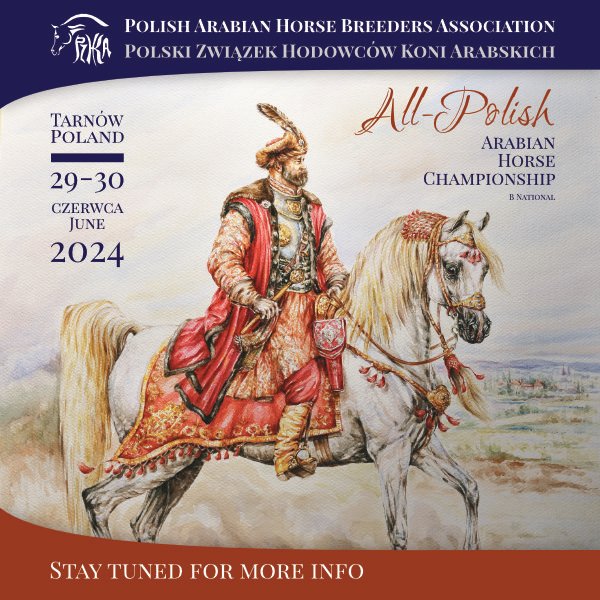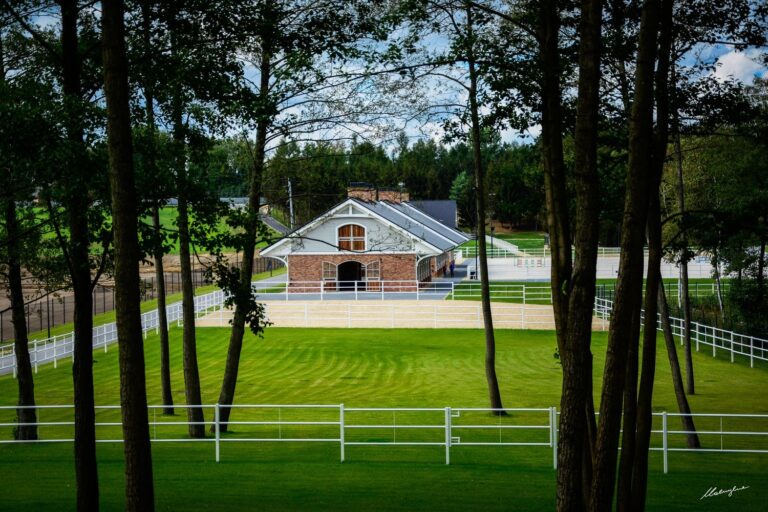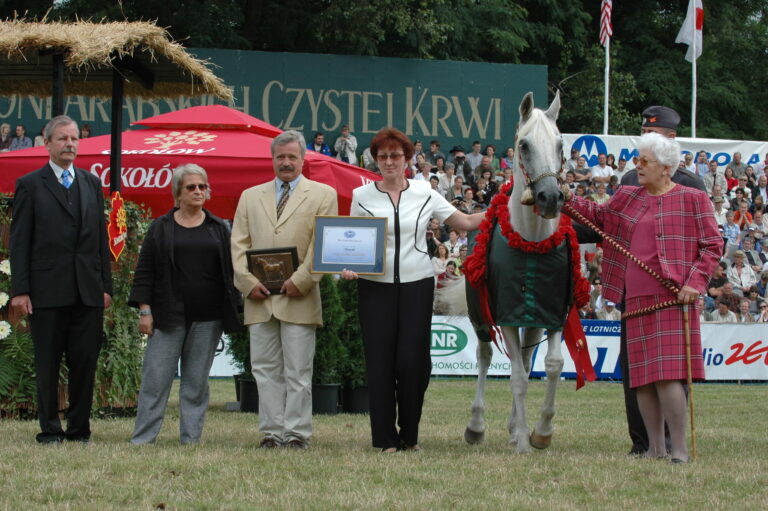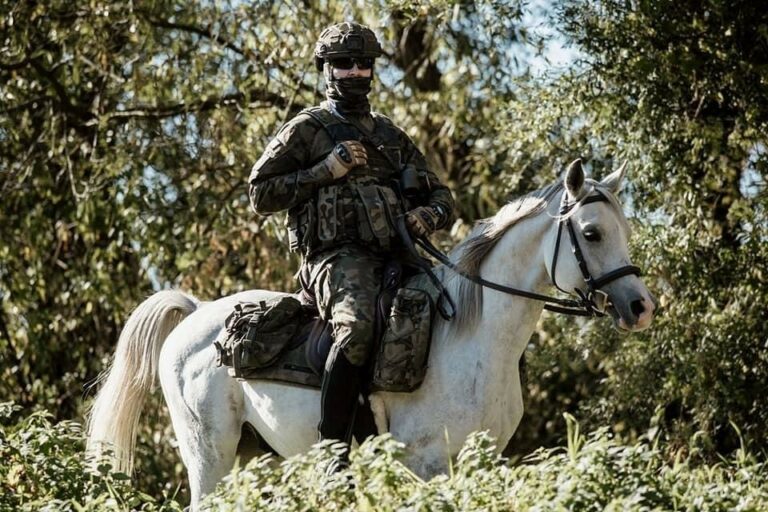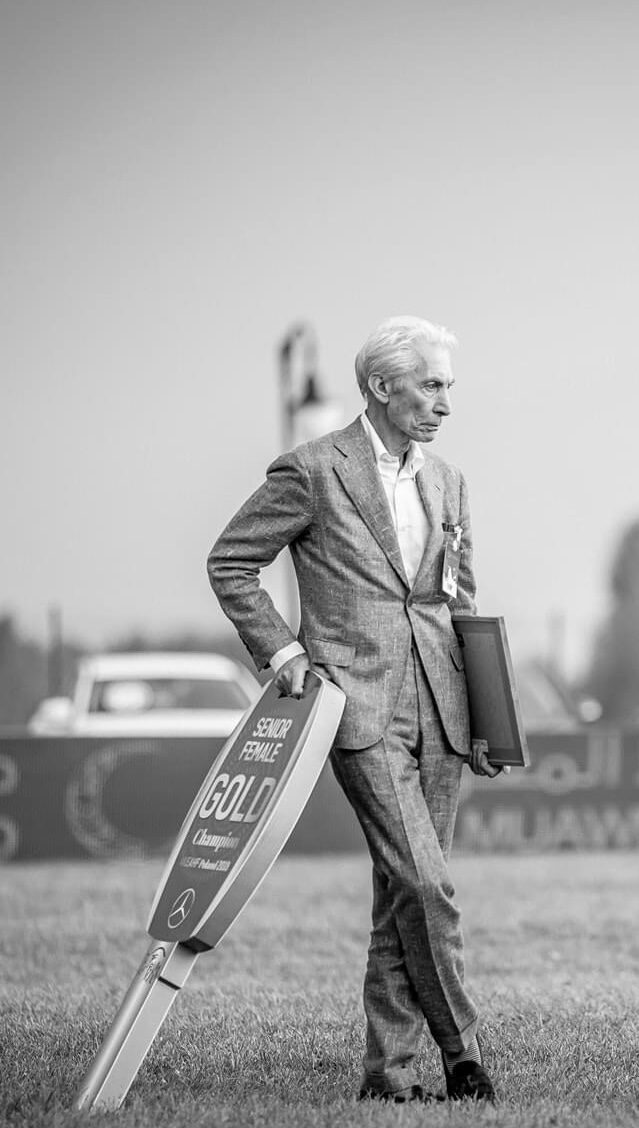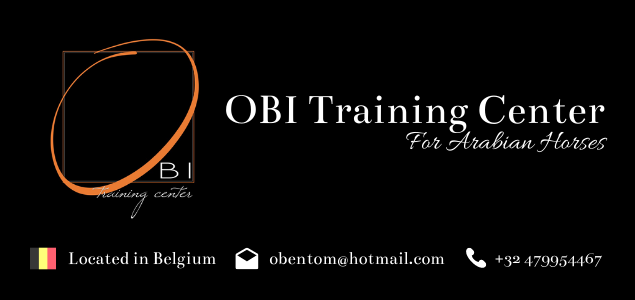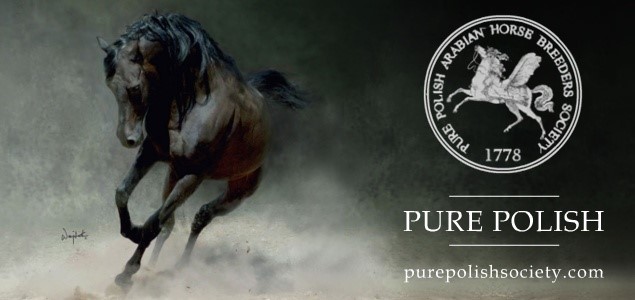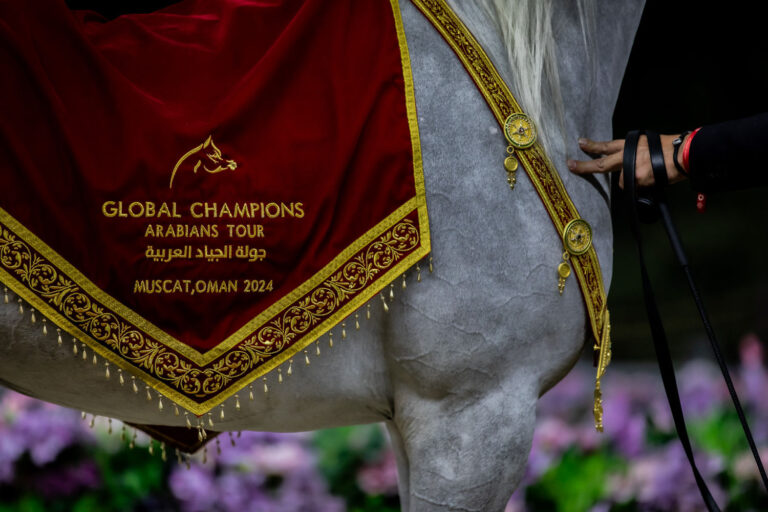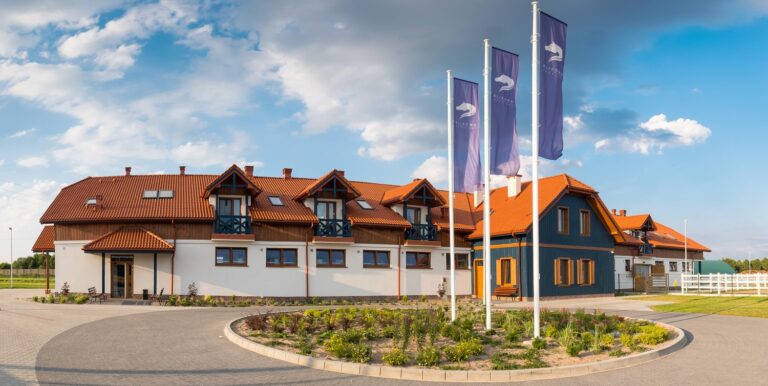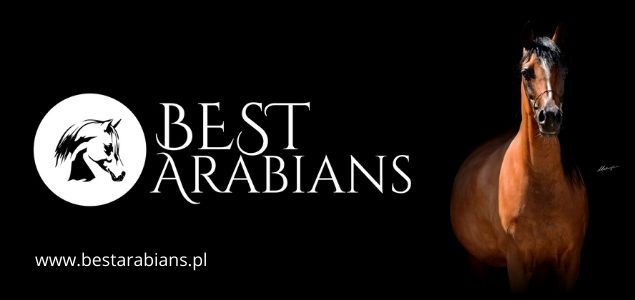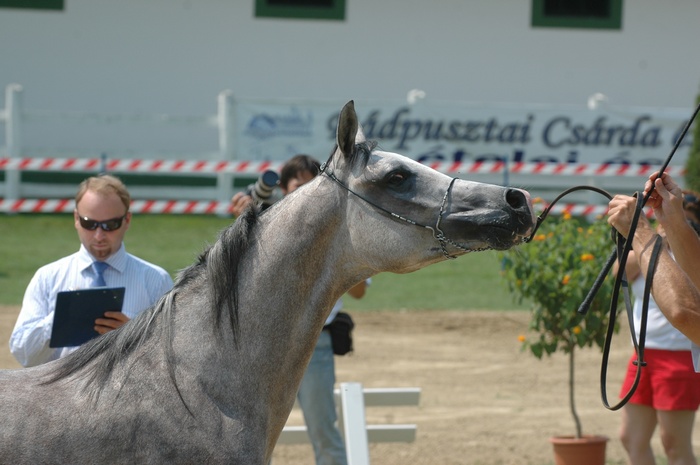
Among the growing number of private Arabian horse breeders in Poland there is a distinct group of Catholic clergymen. Priests: ANDRZEJ MAJCHRZAK, STANISŁAW SŁAWIŃSKI and JAN MATWIJISZYN bring together the duties of both parish rector with the running of a breeding stable. Their horses are scoring successes in the show rings and on the race track.
From where do we know them?
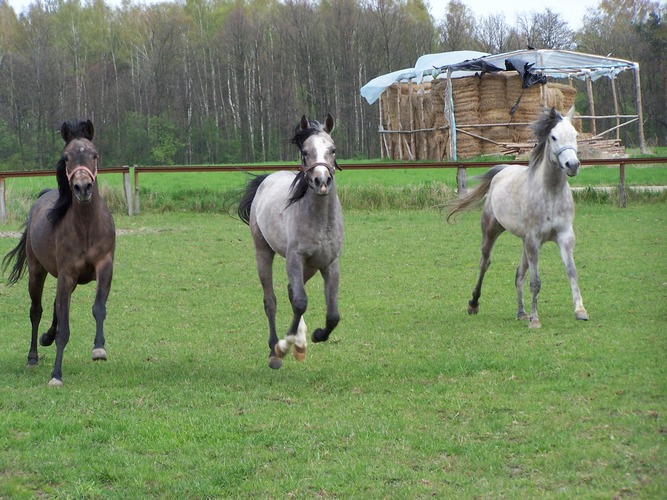
The Reserve Champion from the Hungarian international show at Radpuszta upon Balaton (in August, 2008), the yearling colt Fascyt (Ekstern – Firosetta/Eldon), property of Magdalena and Robert Rudziński, comes from the breeding of priest Stanisław Sławiński – Czeple Arabians in Ciepielów near Tarnobrzeg. This stable was also the birthplace of: Faronn (Ekstern – Firosetta/Eldon) and Pasadia (Ekstern – Pasadena/Eukaliptus), whose successes at the Junior Spring Show in Białka last year drew attention to the breeder’s name. Faronn, who then gained the title of Best Private Bred 2 Year Old Colt and second place in class II B, in September of 2007 participated in the All Nations Cup in Aachen (13th place in class with a score of 87,7). Pasadia competed in Białka in 2007 in class IV C (yearling fillies), placing third.
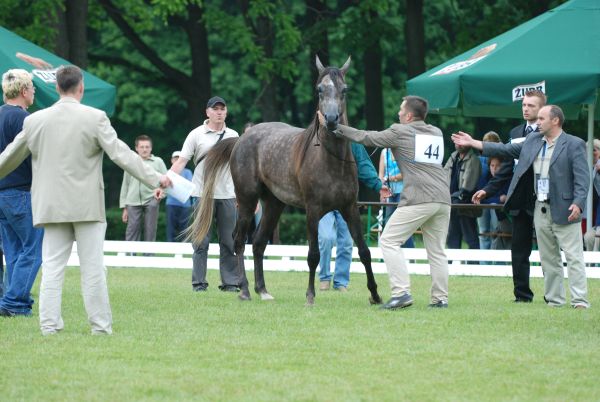
Pallottine priest Andrzej Majchrzak is known in the racing community not only as a clergyman (he performed the requiem and funeral service of Tomasz Dul, one of Poland’s best jockeys), but also as an experienced race horse breeder, which he has also lately began showing. Oaks winner Emanuela (Pamir – Emetyka/Europejczyk), awarded with a trophy for Best Race Filly in 2002, is one of the first successful matings of Rogale Stud, located near Łuków in the Lubelskie region. Emanuela’s daughter, El-Enia (by Eutin), as a yearling placed in the Top Five at the afore mentioned Białka show. Emanuela’s older daughter, Emelia (by Derby winner Espadero), also bred by priest Majchrzak, is a winner of a race for 3 year olds over 2000m at the Służewiec Racetrack from last year. She also raced this year. Also successful on the turf is the Rogale bred Predator (Etogram – Penetracja/Pepton), owned by Mr. and Mrs. Wiśniewski.
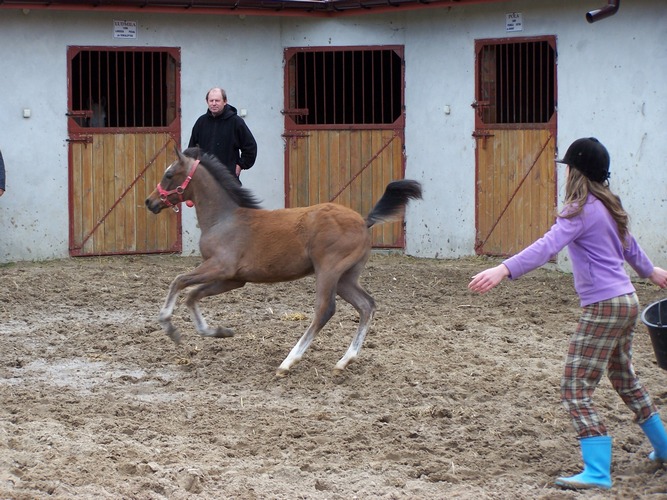
From the 2007 Spring Show in Białka we also remember the spirited grey two year old, who enjoyed moments of freedom after breaking loose from the handler. It was the colt Tidal (Grafik – Turbina/Balaton), who placed 5th in class. With that he brought the first show ring success for his breeder – priest Jan Matwijiszyn from the Walichnowy parish near Wieluń, where next to the presbytery exists a small Arabian stud.
How did it begin?
The breeding beginnings in the case of each priest were bound to the taking up of office at the presbytery in the countryside. But it was a long road that led them to their own Arabian horses.
BREEDING IS AN ADVENTURE – priest Andrzej Majchrzak
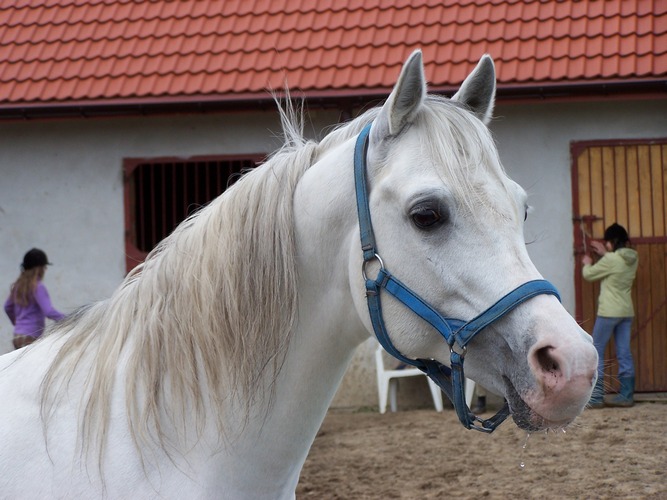
Priest Majchrzak, a priest performing ministerial priesthood, originating from Poznań, had a passion for horsemanship and riding horse breeding since childhood. These animals have been present in his family for a couple generations – both the priest’s father and grandfather from his mother’s side dealt with them professionally. Ever since he can remember his house was full of discussions about Arabians and Thoroughbreds. Before the war his grandfather bred restorations for the army. As a graduate of the Agriculture and Forestry Department of Adam Mickiewicz University in Poznań he was a specialist on the subject. He studied together with Andrzej Krzyształowicz and got to know the future legendary director of Janów Podlaski Stud. Some tens of years later priest Andrzej began coming to the Janów shows and auctions, only as a spectator for the time being.
„And because the passion was still there, then at the beginning it was sheer joy just to be able to see the horses and purchase a catalogue with the Arabians”, recalls priest Majchrzak. “Later came time for reading specialist books on breeding and training. My cousin Paweł Sputowski wrote a degree thesis supervised by Marian Budzyński titled The genealogical and performance characteristic of Arabian horses in Białka”.
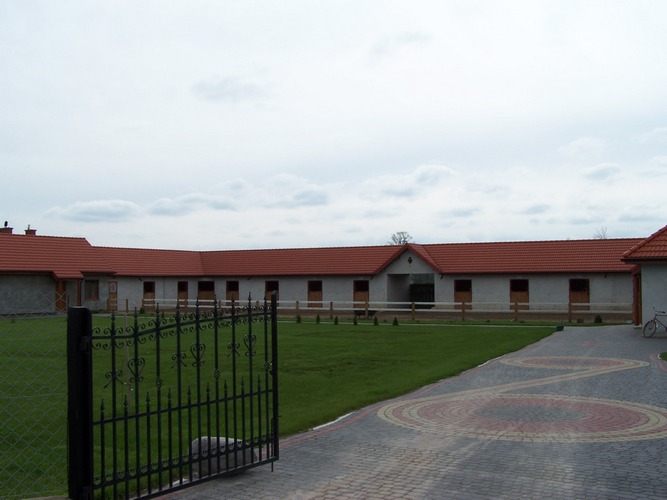
When the political situation gave private breeders a green light, 16 years ago in Janów he purchased the first Arabian mare, the yearling Emetyka (Europejczyk – Etanika/Aloes), crippled, with a broken fore cannon bone and because of that qualified for slaughter, and so possible for him to be acquired for a symbolical price. And as it was the line of Etna… The second bargain purchase was also a Janów mare Penetracja (Pepton – Pestka/Probat) with a broken hip. From these two began the breeding. With time a third broodmare joined the herd, the only one bought at Michałów, the grey Ludmiła (Pesal – Larissa/Eukaliptus). The rest are horses bred solely at the priest’s stud, beside the recent purchase – the Janów stallion Eutin (Etogram – Euzebia/Palas), who is the first own sire of Rogale Stud.
„My goal from the beginning was to breed a horse that director Krzyształowicz spoke about: bold and beautiful”, claims priest Majchrzak. “That’s what we put an emphasis on at Rogale until this day and that’s why we try to present our horses at the shows, but they should also have racing results. We don’t treat it as a business – to get a trophy and quickly sell the awarded horse most profitably. This is to be an adventure and the animal is to be a friend. In the case of Arabs a pure bred foal lived in the tent together with the children, such was the bond. When I sleep at the stud (not always, as the Celiny parish, which priest Majchrzak is parson to, lies a couple of kilometers further – author) I live across the wall with the horses, in the same building that the stable is located. If one of them knocks on the wall with his leg, I hear it in the house. I come out at once and ask what’s going on.”
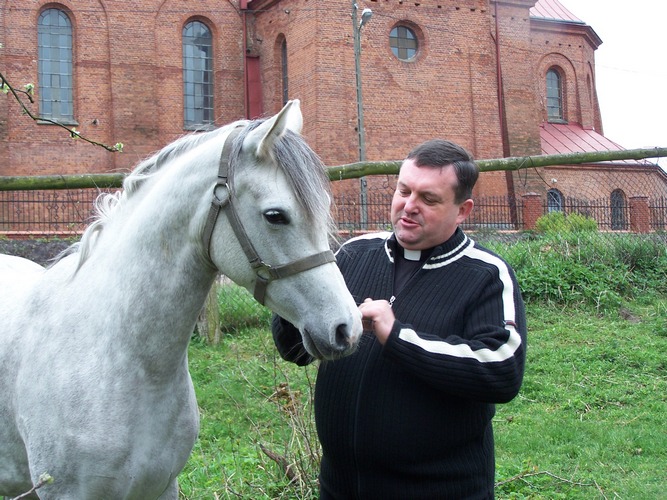
A modern complex of stable buildings, surrounded by greenery and spacious paddocks for the horses, arises the admiration of visiting experts from France and the United Arab Emirates. Priest Andrzej brought the construction works to an end at the expense of his own time and funds, but the functionality of the facility pays off for that endeavor. Even more so, as next to the stable are rooms which enable the accommodation of groups of more than ten people. Summer riding camps for children from the poorest, often dysfunctional families have become a tradition. The priest organizes them in cooperation with Caritas and the local social service center, but he sees to everything himself and acts as the supervisor of the camp. This year he held five such camps.
„Working around horses fixes the character”, he explains. For teaching to ride he uses calmer ponies and Hucul horses, but the campers participate in the life of the entire stable. Many would like to return next year. A famous writer of the twenties, Helena Mniszkówna, once lived here. Behind the fence of the pasture, where the Arabian youngsters roam, her wooden manor Rogale can be seen.
“Why did I choose this place exactly?”, the priest smiles, pointing to a thick cluster of grass with various wild herbs. “There are two rules of horse breeding. No foot, no horse is one. Pasture – the second. And here we have soil of the first and second class. Why does Michałów have such great results? Because they breed horses in a calcareous valley. And many other farms have acidulous soil and meadows, because people use nitro-chalk to prompt the grass. A mistake! However if you lime the meadow and sow herbs, then the horse himself chooses those which have elements and minerals he needs.”
IN THE VICAR’S YARD – priest Stanisław Sławiński

Priest Stanisław Sławiński’s first contact with horses was at the fair in Skaryszew, his home town. He looked at them with the eyes of a child raised in an urban family; his first parishes after ordination were also typically urban. When he came to Ciepielów, the parish like all the old ones had land: 7,5 hectares of 6th class soil. After three winter months of walking in constantly dirty shoes, among Cimmerian darkness from the early hours of the afternoon as the streets had no lamps, with a severe lack of stores and the usual urban comforts, priest Stanisław thought to himself, looking at the village and his neglected farm: God, do I fit here?. Still a year passed, two, three. Priest Sławiński became interested in the history of the 14th century parish, who was once named Czeple. He fixed up the presbytery and garden, made friends with the people. But he discovered the beauty of the countryside to full extent only after engaging himself in breeding Arabian horses. He began with Shetland ponies and a large steed for recreational riding, but when he saw the Arabians in Michałów – he was speechless. From that moment he knew how he would use the farm buildings, the meadow behind the brick presbytery and the vast lawns with the orchard, which stretched upon the hill.
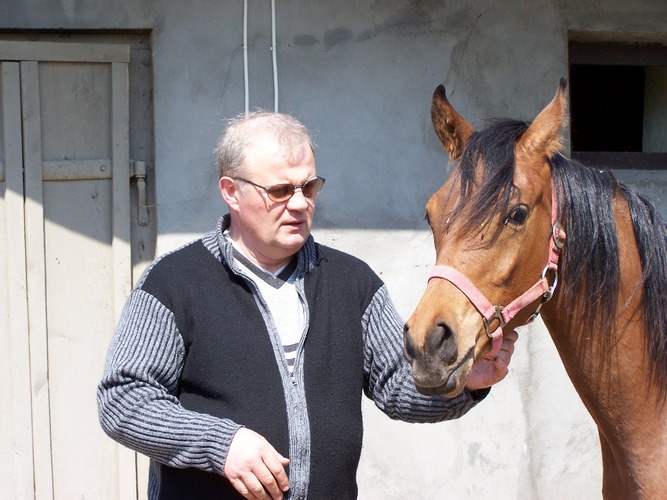
The first pure bred Arabian mare, which appeared in the stud named Czeple Arabians, was Zorza Polarna (Wojsław – Zemsta/Arbil), in foal to Ekstern. From that mating in 2003 Zeksterna was born. Both mares remain in the priest’s stud until this day. Zorza Polarna produced Zydona and Złota Zorza in the next years – both by Metropolis NA (US), both already sold and incorporated into breeding. A couple of months after the foaling of Zeksterna priest Stanisław took a liking to Białka’s grey Firosetta, daughter of the Saklavi-typed Fraskata and Pers.
„I went to the monthly auction, not even dreaming that I would be able to buy her, but Providence allowed for it to happen”, he recalls.
The mare, together with Ekstern, produced first Figurantka, who as a yearling scored 90 points at the Junior Spring Show in Białka. A year later the same combination gave the also show-successful Faronn and two years later – Fascyt. The third line in this small stud was established by the 2004 purchase Pasadena (Eukaliptus – Plisa/Probat), after foaling an offspring of Gazal Al Shaqab (Piarg, gelded). Bred to Piber she produced the chestnut Piegus. However the best combination for her proved to be… Ekstern. From that mating comes the 2006 born Pasadia.
BORN IN CAUCASUS – priest Jan Matwijiszyn
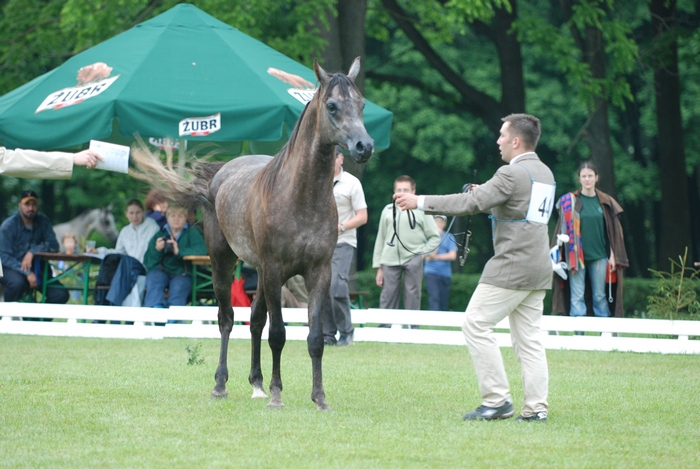
As far as priest Majchrzak’s stud goes under the name of Emanuela St. at the racetrack – from the name of its most outstanding representative, the breeding of priest Matwijiszyn is associated with the foundress, the chestnut Turbina (Balaton – Tribuna/Nazeeh), born in Caucasus from Polish horses, who he sought out five years ago in the classifieds. First he was raptured with her color and white markings on her head, which aroused a warm recollection in the priest.
„I come from the country, there were working horses at home: a mare and a gelding”, he explains. “Baśka allowed only my father to handled her, she bit and kicked others. But what a horse it was! Once she got going with a load, it was hard to stop her. I had a great sentiment for her and when I saw Turbina’s photograph, a child was riding her, then in a way she reminded me of that mare from home. Not only because of the similar coat color. And when I read that she descends from horses taken by the Russians during the war… My parents came from Drohobych in the Ukraine (the name itself suggests an Ukrainian background, as Matwij translates to Matthew). A sentiment set in… I said to myself: In that case I have to buy her, as for a couple of years I have managed the rural parish Walichnowy and tried keeping horses, but not to breed them. We brought her with a breeder we’re friends with on a winter evening before New Year’s Eve and already in January of 2004 she foaled Toscania by Gafal. A year later – the colt Tidal. Then, I must admit, we finally returned not with one, but with two mares… because I also took the chestnut Aszima (Pobeg – Aldona/Europejczyk), from whom I got Astrum by Welon. At first I didn’t think what breeding profile I want – racing, showing – this came later”.
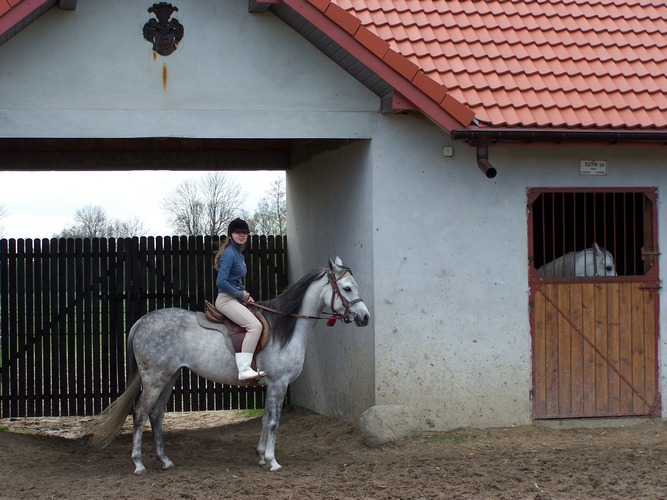
There are a lot of emotions involved with the first presentation of priest Jan’s graduate at the show, not just because of Tidal’s success at Białka:
„Looking at this horse and knowing his pedigree I thought I should try and show him. Later I wanted to resign, but since all was already arranged with Mr Głowacki I had to stick to my word. I went to Białka with the organist who also breeds horses, but draught ones. I had to see how the horse presents himself. We set off late. We arrived and there was a delay at the show. Not knowing this, I went to see Tidal. So I’m looking at a group of horses and say to the organist: Paint me gold and call me Oscar, but I don’t know which one is my horse… But we listened to the commentary (we didn’t have the show program yet) and it turns out that… they were yearling horses! That’s how nervous I was. Later, when I saw Tidal, I thought: It’s not so bad. Only it was right before the storm. And this horse is so chimerical that if he goes – it’s like Ganges. But if something’s not right, that’s it, he moves like he doesn’t care. Simon Głowacki runs out with the horse, I stretch out to see, but people are blotting out my view, I take a peek – Simon runs this way, but… where is the horse??? He broke loose, ran the other way. I say to myself: What did I come here with him for, a disqualification is a sure thing.”
„The horses had one more appearance”, continues priest Jan. “When he began presenting himself again, the downpour started, so that the people who were meant to arouse the horses hid themselves. The jury panel was already gathering their paperwork, because everything was wet. So I went to the car, there was nothing to wait for. It rained cats and dogs, nothing could be seen through the pouring water. I finally went to the stable tents, and water stood there. They gave the scores, for legs it was 14, 15, 16. So I thought, what place could it be, there is nothing to wait for when it’s raining so and no one knows when this storm will end.”
„We went with the organist to the car again. A patch of blue sky appeared. We’re off. On our way home Głowacki Senior called us, saying: Get ready to be decorated. What decoration, I ask. Tidal fifth place. And we’re 200 km behind Lublin already… I was so mad, because I could have had the opportunity to congratulate the state stud directors and be congratulated myself and I let it slip. But then I was not dressed for the occasion – in a sweater and them – in suits, ties. I could not have gone out like that, when I was not at all prepared that I would win something…”
Where do the funds come from?
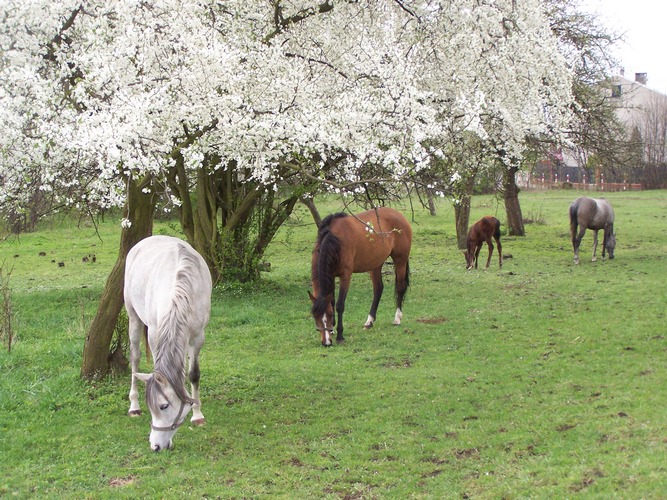
A priest breeder is a subject arousing interest not only because of breeding successes. First of all, it’s rather unusual, second – there is a stereotype that if a priest buys horses, it’s from… church donations.
Priest Majchrzak laughs hearing such speculations.
„Celiny is a rural parish, not numerous, this year I had just a couple of children for the First Communion…”, this is suffice an answer for the inquisitive. The priest doesn’t make a secret out of the fact that he comes from a hard-working, rather wealthy family, where everyone helps one another. With such a background he has achieved everything with his own hard work, starting off with two eliminated from breeding mares. How does he manage this with the duties of priesthood, running a camp, preacher travels and responsibilities of a clergyman?
„Five hours of sleep. This amount has to do”, he answers briefly.
He garners respect as a terrific organizer of everything he puts his mind to and his farm is an example of orderliness – both in appearance and management. The neighboring areas are dairy cattle breeding, so a horse stable fits into this agricultural landscape. The fact that the horses belong to a clergyman doesn’t stir any excitement here. The owner, who was once the chaplain of the representative cavalry and fencing holds no secrets before him, has long ago got the people used to his equine passion.
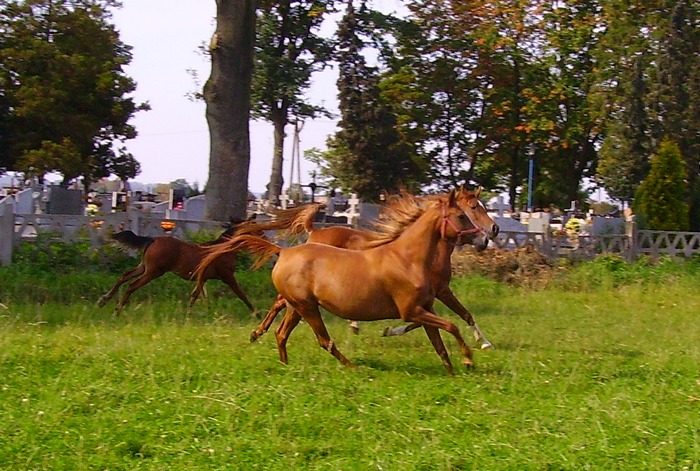
„Each priest has his hobby, passion, just like any other person”, admits priest Sławiński, who was able to persuade his brother in law to purchase an Arabian horse. You just have to start to have the horses earn their own keep after a while. Their beauty is worth all the effort, both work and money. “This is how I treat Arabian horses. I’m not fond of cars, entertainment, I don’t travel much. I mostly like to go to the horses, sit with them, pat them, make friends. It doesn’t come by itself, you have to put some effort into it”.
Coming from an urban world, he fit perfectly into the countryside. From the words of the parishioners beam esteem and cordiality that the priest turned out to be one of “theirs” – he runs the farm, handles the horses by himself in rubber boots, is not conceited, changes clothes from the cassock to regular ones and works like everyone else. It is clear that the parishioners trust their rector and appreciate that thanks to priest Sławiński’s Arabian horses Ciepielów is known in the world, as even journalists from Warsaw come here…
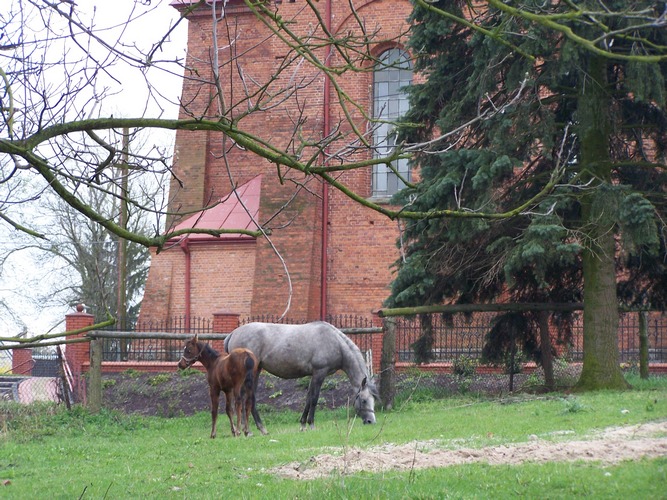
A lot of joy, but also trouble connected with Arabians at the presbytery has priest Matwijiszyn with his parishioners. He spent a part of his saved over the years salary on his breeding. The photos of horses draw attention at the humbly furnished presbytery.
„People showed a great kindness from the beginning, sometimes they even went too far”, he recalls. “One day I was returning from mass and I see that my chestnuts are galloping up and down the fence. I went to see what made them run so. And inside, with a frail stick, a small girl is standing. Why are you prodding them, I asked, getting her out of there. Because they look so pretty when they run…, she said. Well, I like it too, but to have a child walk into the horses alone? It’s a miracle that nothing happened. From that moment I keep watch that nobody comes inside. Over the fence, which is next to the road to the cemetery, people pat them all the time, ask about riding. The horses are broken in for riding, but I don’t have any instructor here and don’t want to risk.”
What for the future?
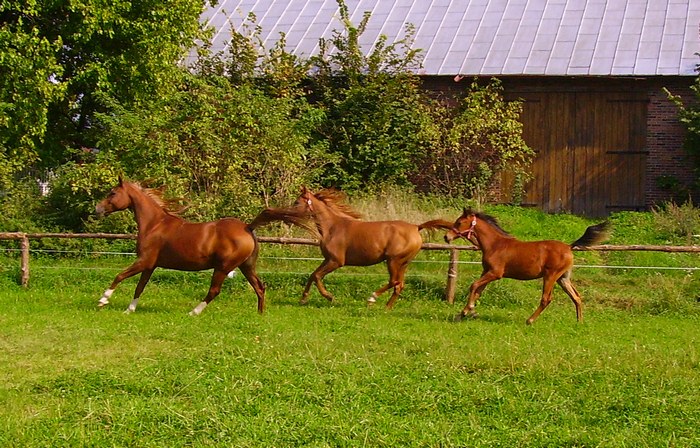
All three emphasize that despite all their love towards horses and breeding this activity is secondary to priesthood, which is the most important in their life. That’s why it is difficult for them to be present at the shows, races or Polish Arabian Horse Breeders Society meetings, which usually take place on the weekends, when there are the most duties in the parishes: marriages, mass, First Communions.
They deal with the duties of everyday stable life in various ways. Priest Sławiński rests when personally feeding and grooming his horses; when he is away his housekeeper takes care of that.
„I seldom leave this place. When I meet other breeders I can never get enough of talking about horses and I always regret that as they are usually people of large businesses, they have so little time for their horses”, he says, stroking the grey Zeksterna.
He would not like to enlarge the herd too much, however he dreams of enriching his breeding with the descendants of the Milordka and Szamrajówka dam lines, which he values much.
„Maybe God will allow it once…”, he sighs. “Because Providence helps me in this matter, I’m 100% sure and last year is evidence of this…”
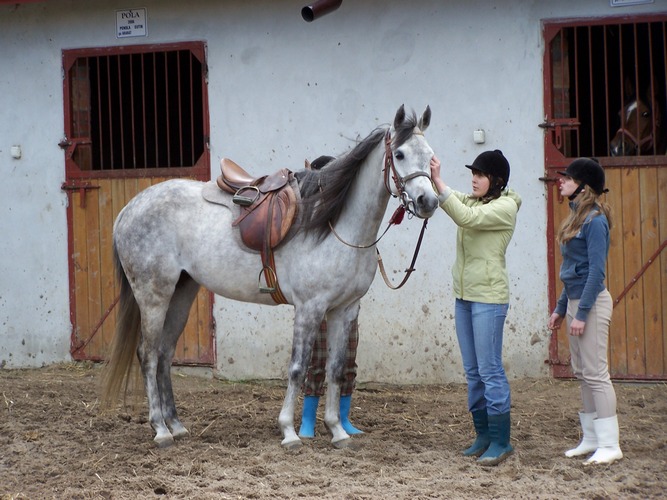
Priest Matwijiszyn also takes care of his herd by himself every day. Raised in the country he likes this duty and could not imagine that the farm buildings should stand useless. He would like to finish the renovation of the stable, though not to enlarge it. So that there would be no temptation.
„It is obvious that horses must be sold, but it is hard for me to part with them. I have already tried to sell Toscania so as not to sell her… And on the other hand, each new born foal appears better and you want to keep him.”
The most numerous herd of priest Majchrzak requires a hired person for the stablework. Even more so, as the Pallottine travels a lot across the country with his preachings and in the summer holds several camps. During the year the local teenagers come to help with the horses in exchange for the longed-for opportunity to ride.
„I ride myself all the time, I have a racing trainer license. I have a passion for speed, wind. That’s why I strive for such horses, bold and beautiful. And the racing boldness is after the dams. I constantly study this subject and put a lot of work into what I do. But breeding and races teach humility. Because a horse can raise you to success or bring you down. That’s why you should treat this not in terms of ambition, but large adventure. What does this mean? That I deliver births myself. And the most pleasant thing that can happen to a breeder: when the foal doesn’t feel the difference between you and the dam! Sometimes he cuddles up more to you than to his mother. Or when I come here, open the gate and all the horses neigh. Because they hear you, see you. It’s like with a dog. Or on the pasture: a whistle and they’re all here. This is what being around horses is all about. And you know that she came not because she expects a treat. But then the same horses, when let out of the stable, come out like lightning. And that’s what it’s all about!”
Download the PDF version of the article»


